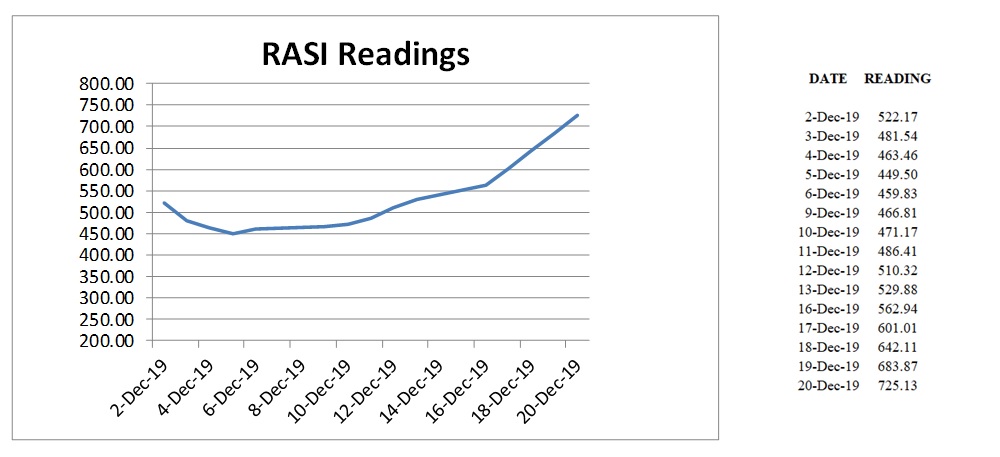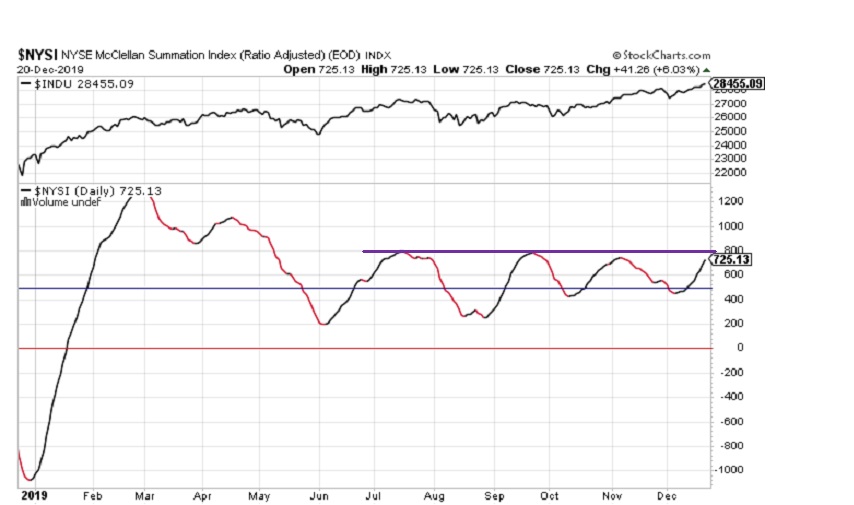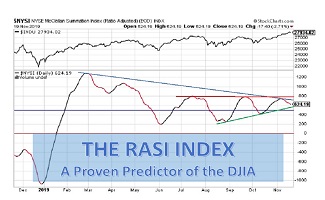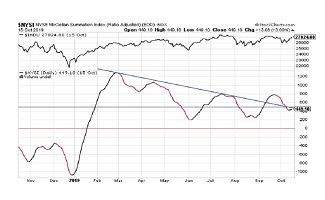Note: We are back to using the Friday closing price for RASI, and also now report every two weeks. However, we collect the Index on a daily basis and include readings in both table and chart form as set out below.
Index Reading At Friday December 20 Close
The RASI at the close on Friday, December 20 is at 725. The Index fell below the 500 benchmark on December 3 and reached its near-term nadir on December 5. It then did an abrupt turn-around and has headed higher every day since then. The benchmark 500 level marks the transition from a “Positive” market outlook to a “Negative” one, and vice-versa.

Further Up-Side Possibilities
Now that the 500 benchmark has been overcome, the near-term challenge for the RASI is the 800 level. If the Index is able to continue to rally, then it will have to overcome resistance provided by the Triple Top (Purple line) at about 800, which is only 10% above its current level.

Conclusion
RASI is on the up-trend but a very significant technical hurdle, a Triple Top, lies ahead. The Index has to break through the 800 level with conviction to expect further gains to occur.
Significance of RASI Index for the Market
The RASI Index has proven to be a good predictor of the future direction of the DJIA. The upper section of the chart above depicts the closing prices of the DJIA and, clearly, there is a good correlation between the two indexes. Since the lows of mid to late August, the RASI and the DJIA both moved higher in unison and, from mid-September until almost mid-October, they both moved lower together. At that point, they both moved higher together until the beginning of November, and then the two indexes diverged for most of that month. At the very end of November, the two indexes moved back in sync as each of them exhibited a strong upwards move that is continuing.
In our last report, we said: While short-term aberrations between the two Indexes can occur from time to time, a prolonged divergence ultimately ends with the Indexes moving back in sync together. Since this divergence has been trending since the beginning of November, either the RASI will have to turn back up to match the DJIA’s upward trend, or the DJIA is about to fall to catch up to the RASI’s month-long decline. Well, the dichotomy resolved itself and the RASI decided to emulate the DJIA by moving higher. Let us see for how long the two indexes can continue their up-trending moves.
///
What is the Ratio-Adjusted Summation Index (RASI)?
- The Ratio-Adjusted Summation Index, RASI, is a market indicator developed by Tom McClellan of McClellan Financial Publications.
- A RASI reading that rises to and reaches a specified level (500 and above) can be a signal that a new market up-trend is starting.
- The +500 level is an important dividing line for the RASI, in terms of giving a go/no-go signal about the new up-trend.
- When a rebound in the RASI occurs, but it falls short of getting up to the 500 level, historically that has meant trouble lies ahead.
- But zooming well above 500 is a sign that there is a lot of strength behind the move, and the higher it goes above 500, the more emphatic the message of strength.
- Conversely, a move from well above 500 down to and below 500 is a signal that the market is weakening and that it should move lower.
///





